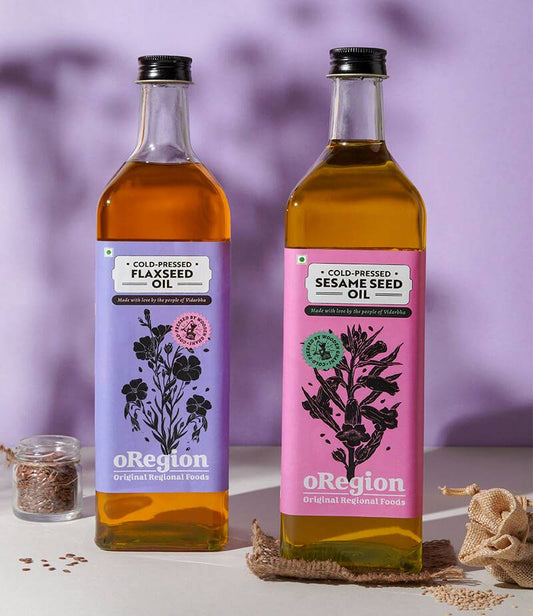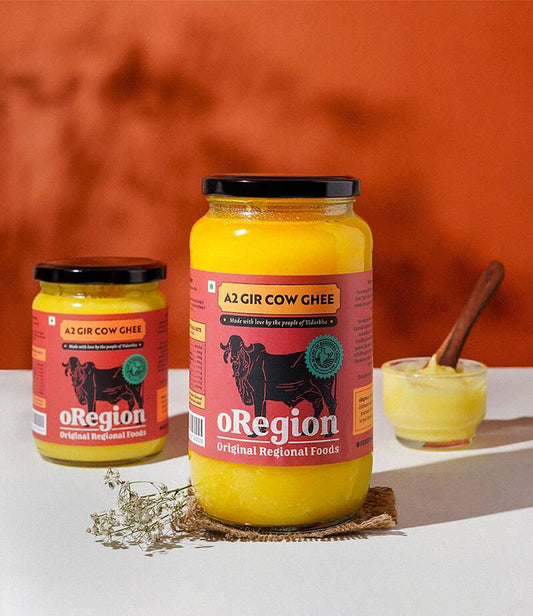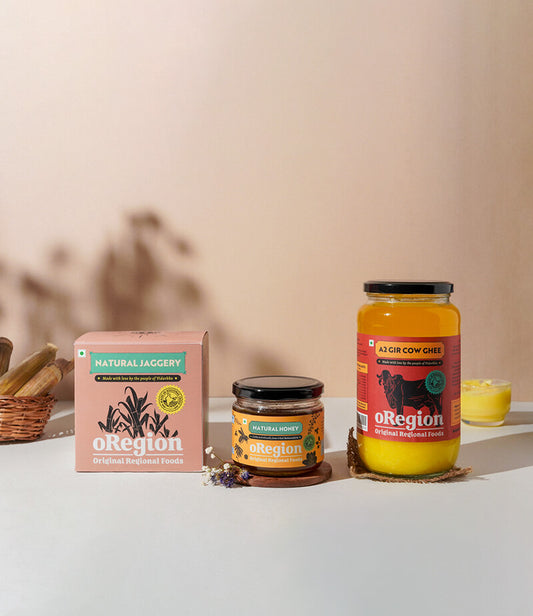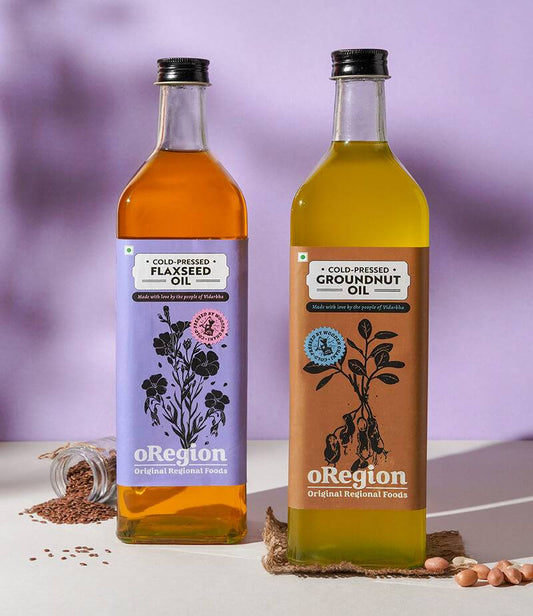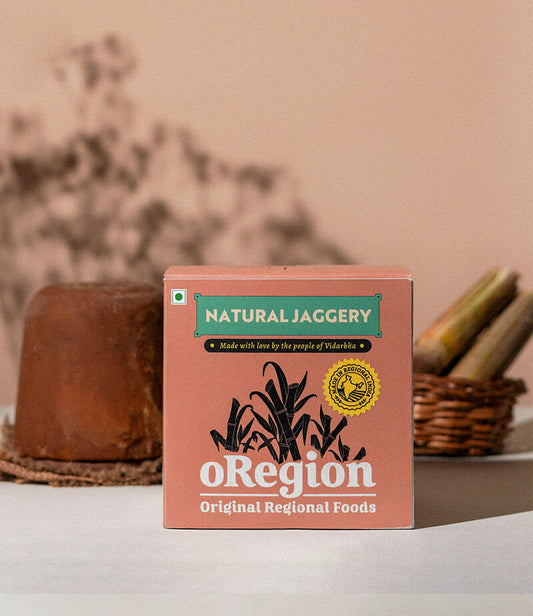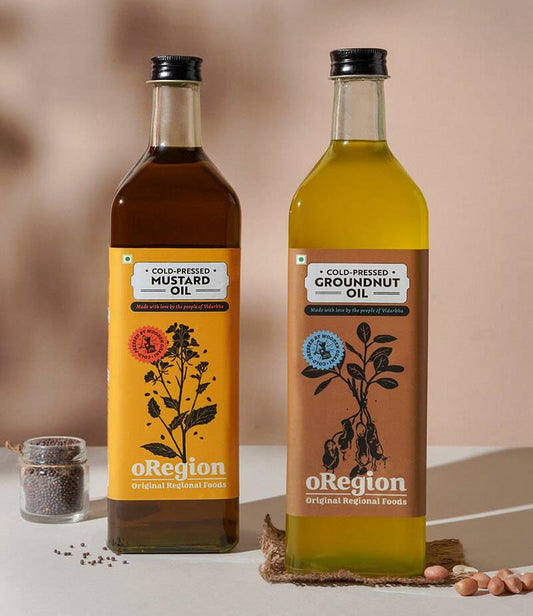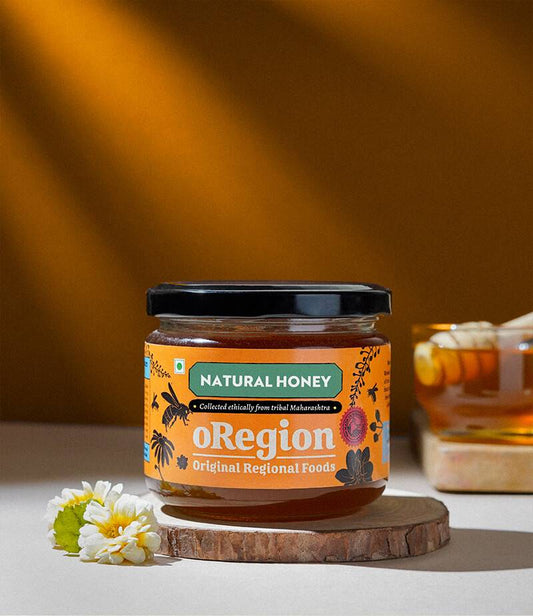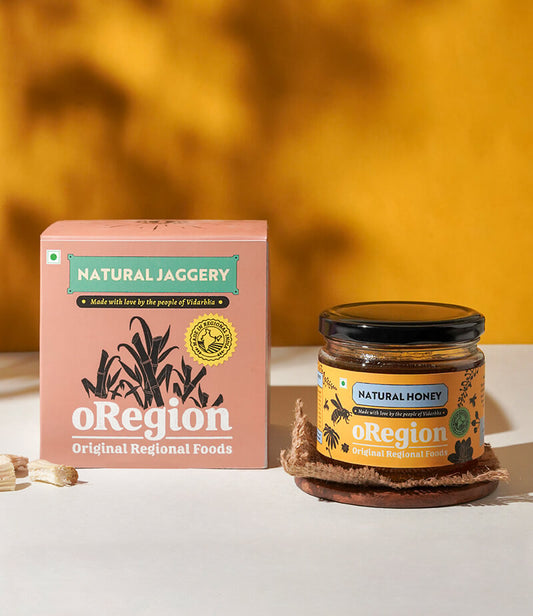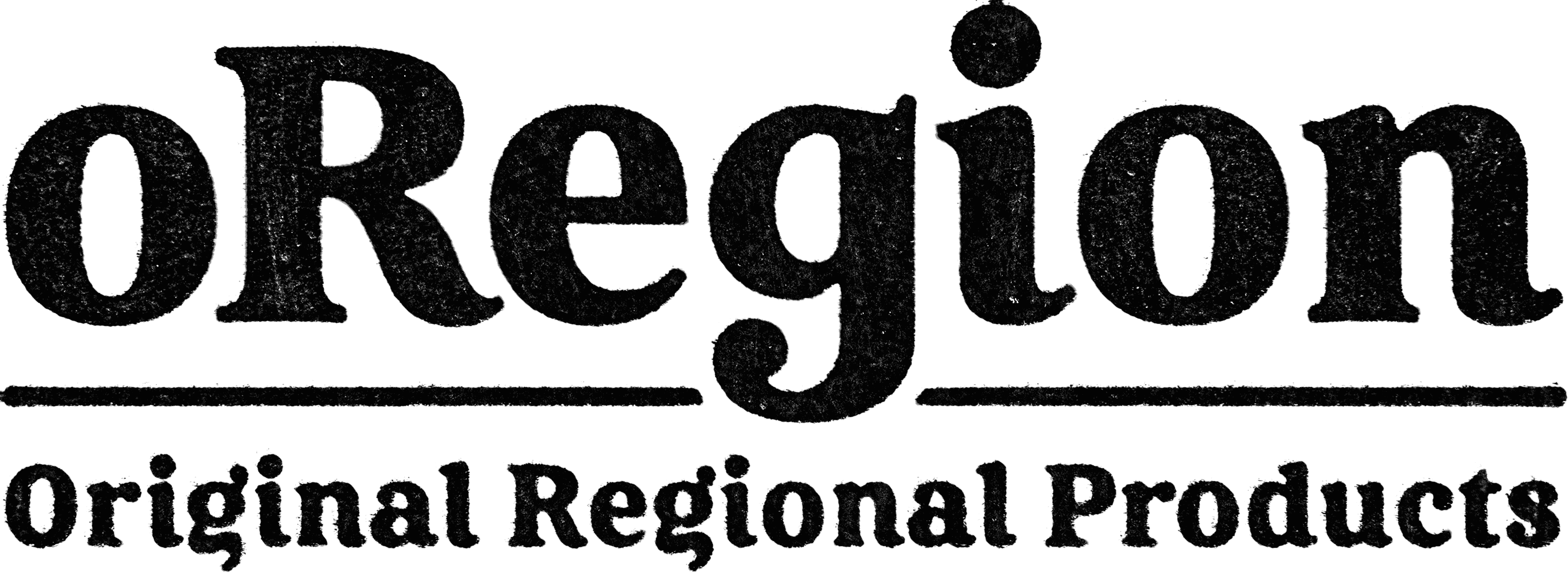
Why Is Adulterated Ghee Making Headlines? Understanding the Rising Concern
By oregion foodsDid you know that nearly 15% of ghee samples tested by the Food Safety and Standards Authority of India (FSSAI) contain adulterants? This alarming statistic highlights the growing challenge consumers face when seeking pure, high-quality ghee. Adulteration often involves mixing ghee with cheaper fats like palm oil or vanaspati, compromising both its nutritional value and authenticity.
The golden spoonful of ghee—once considered the purest form of nourishment in Indian kitchens—has now found itself at the center of a storm. From FSSAI raids to shocking seizures, recent reports have revealed the dark reality of adulterated ghee flooding the markets. As demand soars for A2 Gir Cow Ghee, Bilona Ghee, and organic alternatives, fraudulent practices are rising to exploit unsuspecting consumers. This article explores why adulterated ghee is making headlines, the risks involved, and how trusted brands like oRegion are setting a benchmark for purity.
Key Reasons Behind the Rising Adulteration of Ghee
Widespread raids and high-profile seizures
Government agencies across India have conducted hundreds of raids exposing fake ghee manufacturing units. These operations often uncover products mixed with vanaspati, starch, detergents, and synthetic oils, packaged in attractive jars to mimic premium brands.
Read More : How Ghee Differs from Butter
The Great Ghee Scandal of 2025: A turning point for India’s dairy industry
 2025 witnessed the biggest ghee scandal in decades. Authorities busted large networks selling adulterated ghee across metros, temples, and wholesale markets. The scandal revealed how adulteration was no longer small-scale but organized and nationwide.
2025 witnessed the biggest ghee scandal in decades. Authorities busted large networks selling adulterated ghee across metros, temples, and wholesale markets. The scandal revealed how adulteration was no longer small-scale but organized and nationwide.
FSSAI surveillance drives and state-level crackdowns
The Food Safety and Standards Authority of India (FSSAI) intensified surveillance in 2025, targeting dairies and distributors. From Uttar Pradesh to Tamil Nadu, thousands of liters of fake ghee were seized in a matter of weeks, sparking public outrage.
Festival season raids: Why adulteration spikes during celebrations
During Diwali, Navratri, and Holi, demand for ghee skyrockets. Fraudsters exploit this by flooding markets with cheaper adulterated alternatives that can pass unnoticed in bulk purchases.
Temple supply chain fraud: When faith meets food fraud
Temples—major buyers of ghee for offerings—have also fallen victim. Raids exposed suppliers delivering fake Gir Ghee to religious trusts, raising questions of faith and ethics.
Read More : A1 vs A2 Cow Ghee: Key Differences & Benefits
Total Adulterated Cases Observed During Peak Festive Time
Seasonal demand and the surge in fake ghee production
India’s festivals drive a 300–400% surge in ghee demand, making it lucrative for fraudulent players.
Data from raids during Diwali, Navratri, and Holi seasons
FSSAI reports highlight that nearly 60% of seized ghee during these seasons is adulterated, particularly in Tier-2 and Tier-3 cities.
Why festivals create a black market opportunity
Bulk orders by sweet shops, caterers, and temple committees create loopholes where quality checks are skipped—a loophole fraudsters exploit.
The Crisis of Faith: Math Behind Ghee Adulteration
Ghee as “liquid gold” in Indian kitchens
Ghee isn’t just food—it’s tradition, Ayurveda, and culture. But when it becomes “liquid gold” in terms of price, adulteration becomes inevitable.
The widening gap between traditional purity and modern shortcuts
While A2 Bilona Ghee takes 30–40 liters of desi cow milk to produce just 1 liter of ghee, adulterated varieties use palm oil or hydrogenated fats for bulk production at a fraction of the cost.
Total Milk Production of Desi Cows
India’s indigenous cow breeds and their limited production capacity
Desi Gir cows produce 3–6 liters of milk per day, far less than crossbred or Jersey cows.
Why A2 desi cow milk is not enough to meet mass demand
This limited output makes A2 Cow Bilona Ghee rare, while consumer demand continues to climb.
Role of crossbred cows vs desi cows in the ghee market
Crossbred cows dominate commercial dairies, producing quantity over quality, while A2 Gir Cow Ghee remains a premium niche product.
Total Demand for Ghee in India and Worldwide

Rising domestic consumption due to health trends
With Ayurveda-backed health claims, ghee has made a comeback as a superfood, driving urban demand.
Global exports and demand from Indian diaspora
Countries like the US, UAE, and UK are importing more Organic A2 Cow Ghee, widening the supply-demand gap.
How Ayurveda and wellness tourism boost ghee demand
Ayurvedic retreats in Kerala and Rishikesh promote A2 Bilona Ghee as part of Panchakarma therapies, further increasing demand.
How the Gap Between Demand and Supply Fuels Adulteration
-
Economic pressure on small dairy units forces them to cut corners.
-
Adulterated ghee costs 50–70% less to make, allowing fraudsters to undercut market prices.
-
The price of Gir Cow Ghee vs adulterated ghee widens the temptation.
The Culprits Behind This Adulteration
-
Unregulated local dairies sell without testing.
-
Middlemen and wholesalers mix adulterated stock with genuine supply.
-
Large-scale fraud rings in cities operate under fake brand labels.
Serious Health Risks of Consuming Adulterated Ghee
-
Cardiovascular disease due to hydrogenated oils and trans fats.
-
Liver and kidney damage from industrial chemicals and coloring agents.
-
Digestive issues like bloating and acidity from starch and fillers.
-
Toxic exposure causing allergies, skin rashes, and even long-term metabolic issues.
Profit-Driven Practices in the Ghee Market
Fraudsters use modern techniques like:
-
Adding vegetable oils that mimic texture.
-
Using synthetic flavoring to copy authentic ghee aroma.
-
Attractive packaging and false organic claims.
How Consumers Can Save Themselves From Misleading Activities
-
Home tests: Heat ghee—Pure Ghee melts clear, adulterated leaves residue.
-
Read labels carefully: Look for FSSAI license, batch number, and expiry.
-
Choose trusted brands: Prefer certified Organic A2 Desi Cow Ghee.
-
Educate family members about risks of low-cost alternatives.
Consumer Empowerment and the Rise of Organic Alternatives
The scandals have made people skeptical, but also more conscious buyers. A growing section of Indians now choose certified organic brands like oRegion, ensuring authenticity and purity.
About oRegion Ghee: A Promise of Purity
Traditional A2 Bilona method of preparation
oRegion Ghee is prepared through the ancient Bilona process, where curd from A2 Gir Cow milk is churned to extract butter, then slowly heated to yield golden ghee.
Direct sourcing from desi cow farmers
We partner directly with small-scale Gir cow farmers, ensuring ethical sourcing and better farmer income.
Transparent production and testing standards
Every batch undergoes FSSAI-approved lab testing, ensuring no compromise on quality.
Frequently Asked Questions (FAQs)
1. How can I check if ghee is pure or adulterated at home?
You can do simple tests: melt ghee in a spoon—pure ghee melts clear, while adulterated ghee leaves residue. Another method is the fridge test: pure ghee solidifies evenly, whereas adulterated ghee shows layers or separation.
2. Why is adulterated ghee making so many headlines in India?
Because of government raids, FSSAI crackdowns, and major seizures, adulterated ghee has been exposed as a widespread fraud. Festivals like Diwali and Navratri see the highest adulteration due to soaring demand.
3. What are the health risks of eating adulterated ghee?
Consuming adulterated ghee can lead to heart problems, liver damage, digestive disorders, allergies, and toxic exposure due to trans fats, synthetic colors, and harmful chemicals.
4. Why is A2 Gir Cow Ghee more expensive than regular ghee?
Because it is made from milk of indigenous Gir cows, which produce less milk compared to crossbred cows. The Bilona method requires large quantities of milk, making it rare, labor-intensive, and more expensive.
5. What is the current price of Gir Cow Ghee in India?
The price of Gir Cow Ghee can range between ₹1,200 to ₹2,500 per liter, depending on whether it is Bilona-made, organic-certified, or infused variants like oRegion Betel Leaf Ghee.
6. Which is the best A2 Bilona Ghee brand in India?
Consumers often search for trusted brands with certification and transparency. oRegion Ghee is one such brand, offering pure A2 Gir Cow Bilona Ghee and unique blends like Betel Leaf Ghee, backed by FSSAI-approved lab testing.
7. Why does adulteration increase during festivals?
Because demand for ghee spikes 3–4 times during festivals like Diwali, Holi, and Navratri. Fraudsters exploit bulk orders by sweet shops, temples, and caterers where quality checks are minimal.
8. Is organic A2 cow ghee really better than regular ghee?
Yes. Organic A2 Cow Ghee is free from synthetic additives, made traditionally, and sourced from desi cows. It is considered healthier, more digestible, and richer in nutrients compared to adulterated or vanaspati-based alternatives.
9. How is oRegion Ghee different from other ghee brands?
oRegion follows the traditional A2 Bilona process, sources directly from desi Gir cow farmers, conducts regular FSSAI-approved testing, and even offers
The Secret Ingredient: Betel Leaf Infused Ghee
Ayurvedic roots of betel leaf in digestion and immunity
Betel leaf is known for improving digestion, immunity, and metabolism.
Why oRegion introduced this unique wellness blend
Our Betel Leaf Ghee combines ancient Ayurveda with modern wellness, offering consumers a truly unique product.
Consumer feedback and rising demand
Health-conscious buyers have embraced this blend, making oRegion Betel Leaf Ghee one of our fastest-growing products.
Approved Quality and Testing Standards at oRegion
-
Regular lab testing certified by FSSAI.
-
No compromise policy—we reject any batch that doesn’t meet standards.
-
International certifications to ensure global consumer trust.
The Future of Ghee in India: Trust, Transparency, and Tradition
The way forward lies in:
-
Stricter enforcement of food safety laws.
-
Consumer-driven demand for authentic products.
-
Support for ethical dairy farming and indigenous breeds.
In oRegion, we believe that ghee is more than food—it’s heritage, health, and honesty in a jar.
Conclusion: Choosing Purity Over Profit
The surge of adulterated ghee making headlines is not just about food fraud—it is about trust, health, and cultural integrity. With rising demand for A2 Gir Cow Bilona Ghee, unethical players are exploiting gaps in regulation and consumer awareness. From festival frauds to organized supply chain scams, the risks are real, and so are the health consequences of consuming spurious ghee.
However, this crisis has also sparked a movement toward purity and transparency. Consumers today are more informed, seeking authentic, certified, and organic alternatives like oRegion Ghee, which uphold traditional methods and uncompromising quality standards.
The future of India’s most cherished “liquid gold” depends on how strongly we insist on authenticity over affordability, and wellness over shortcuts. By making conscious choices and supporting trusted brands, we can ensure that every spoonful of ghee remains what it was always meant to be—pure nourishment for body, mind, and soul.
Follow us for more wellness tips
👉 Buy Now on oregion.in
📸 Instagram: @oRegion.in
📘 Facebook: facebook.com/oRegionfoods
▶ YouTube: https://www.youtube.com/@oRegion_foods
